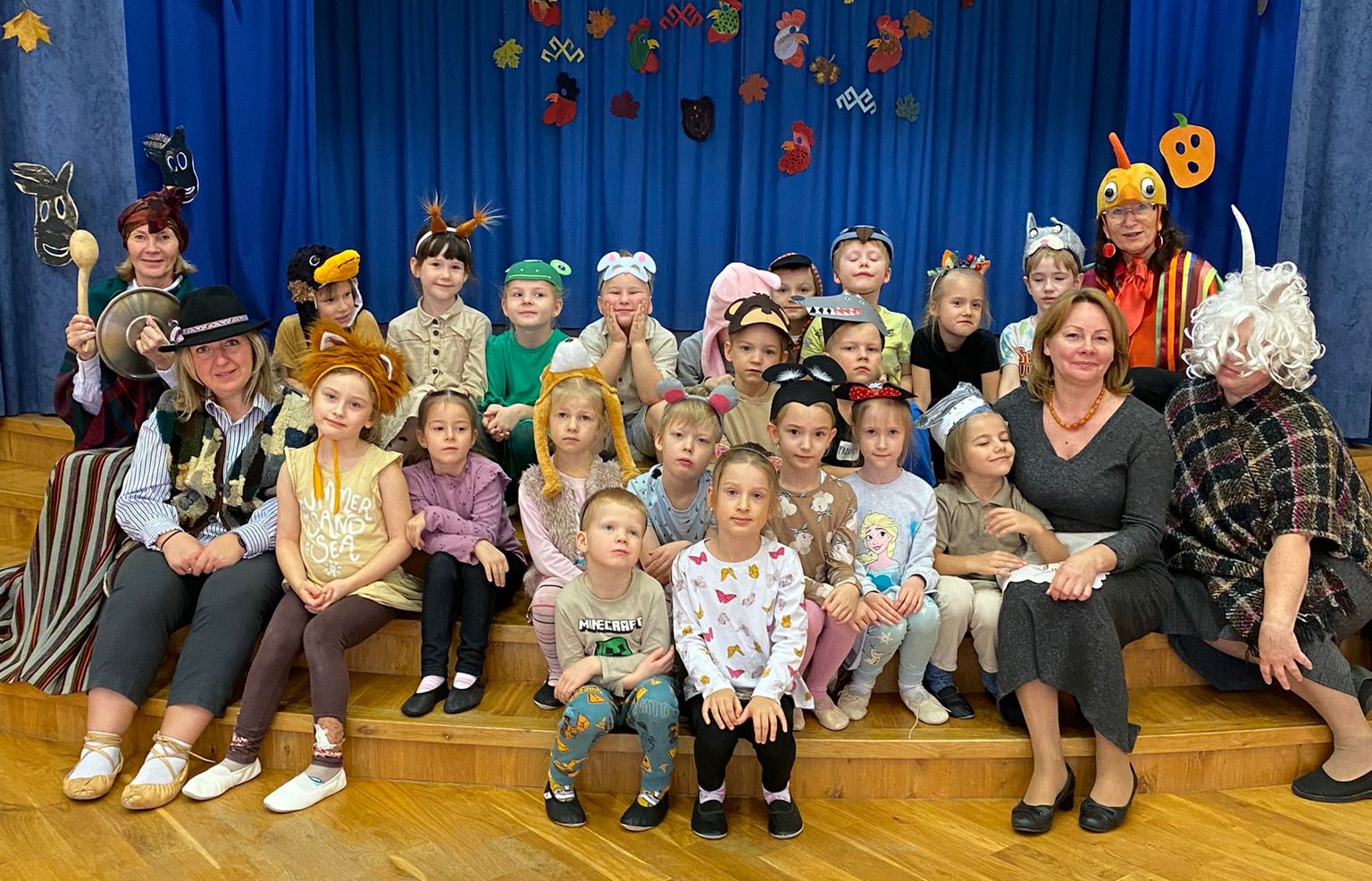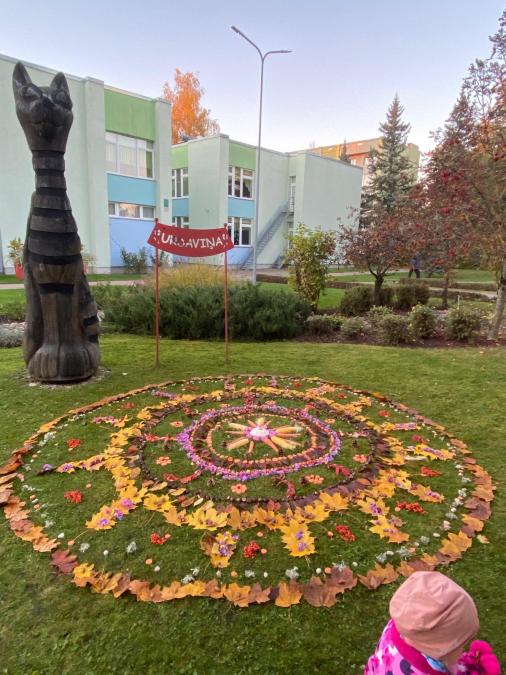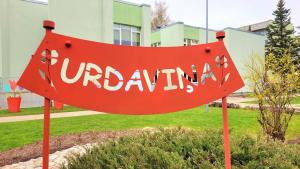Ikšķile’s preschool “Urdaviņa,” opened on April 1, 1986, is like a vibrant flower meadow with groups named after Daisies, Sunflowers, Thistles, Cornflowers, and Bluebells. Dedicated to creating a modern and innovative environment, the institution fosters children’s growth into independent, responsible, and curious individuals, respecting each child’s unique abilities and developmental needs. With a safe, supportive, and creative environment, “Urdaviņa” helps children acquire knowledge and skills through a professional team. In this interview, we speak with Ance Dombrovska-Žogota, who has worked as a preschool teacher at “Urdaviņa” for 18 years, sharing her personal journey from being a babysitter to receiving the “Teacher of the Year Award 2024,” and revealing what inspires her and makes her proud in her work. Ance is motivated daily by the children’s unconditional love, dynamic routine, and the joy of shared celebrations, which affirm her calling and pride in her profession.
How would you describe your experience starting as a preschool teacher at Ikšķile’s “Urdaviņa,” and how has this environment helped you develop your skills?
“I am a preschool teacher and work at Ikšķile’s preschool ‘Urdaviņa.’ I have been working as a teacher in a preschool for 18 years. I have been fortunate to hone my preschool teaching skills in the same group where I began my career as a young, studying teacher.”
What inspired you to work in a preschool and become a teacher?
“I became a preschool teacher quite naturally. During high school, I periodically worked as a babysitter in various families, which gave me my first experience working with young children. After graduating high school, I enrolled in the pedagogy faculty at university. At that time, Ikšķile’s only municipal preschool was undergoing expansion and reconstruction. Upon learning that preschool teachers were needed, I applied to ‘try out what it’s like to be a preschool teacher.’ The role of a preschool teacher wasn’t unfamiliar to me from childhood, as my mother also worked as one.”
What do you value most about working with young children?
“I value most the children’s unconditional love, curiosity, and eagerness to participate in offered activities. I appreciate their efforts and joy in preparing for and performing at various group celebrations. From the very beginning, I have valued the dynamic rhythm of daily work.”

Can you share a funny or heartwarming moment from your work that you’ll never forget?
“Over the years, there have been plenty of both funny and heartwarming moments. Once, a three-year-old girl came to me with a great desire to tell a story. ‘I’ll tell you a story! It’s my favorite story. PRINCESSES. Long ago, there were two princesses—one Ance, one Sandra, and one Dace. They held hands and were happy. They rejoiced and danced. They had dresses, shoes, boots, and pants—they dressed up. They were my favorite princesses. They talked, and there was peace all over the world. They smiled and laughed. They joked. They walked and enjoyed the flowers. They looked at the sky and listened to the birds. They lived happily ever after.’ That was a story about us—the girl teachers and the teacher’s assistant.”
If you hadn’t chosen to become a preschool teacher, what other career could you imagine pursuing and why?
“At the moment, I can’t think of what else I could do… because I have grown into and with my work.”
What is your favorite children’s book and why?
“My favorite childhood books are L. Vāczemnieks’ Warm Hug and A. Karule’s Little Tongue, as well as A. Lindgren’s We’re Summer Guests on Saltkråkan. I’ve always loved stories that reflect real life and believable events. In my work, especially in the preparatory group before naptime, I choose to read longer stories or fairy tale books to the children, such as A. Lindgren’s Karlsson-on-the-Roof, Pippi Longstocking, or E. Raud’s Naksitrallid. Currently, I also enjoy books that highlight modern life, like A. Žvo’s My Digital Family and L. Jambuševa’s The Day I Transformed.”
What one piece of advice would you give to your younger self at the start of your career?
“I would dedicate A.A. Milne’s quote to myself: ‘Promise me you’ll always remember: You’re braver than you believe, stronger than you seem, and smarter than you think.’”
What is one moment in your career that made you feel truly proud?
“One moment in my career when I felt truly proud was receiving the ‘Teacher of the Year Award 2024.’ When I received the invitation letter, I didn’t realize it was for me; I thought I was invited to attend the event and celebrate colleagues. I even said, ‘Great that I’m invited; who are we honoring this year?’ Only then did I understand the letter’s purpose. Of course, I felt joy and pride for such recognition from colleagues and the institution’s leadership. Thank you! Beyond this uplifting moment, I feel pride in every successfully organized group event and creative afternoon—Christmas, Mother’s Day, or graduation.”

How would you describe your typical workday at the institution?
“My typical workday at the institution is based on a daily schedule. The workday is dynamic, exciting, and interesting. There is close collaboration daily with music and sports teachers, support staff, and the preschool administration. I’m also pleased with our responsive preschool nurse, who is ready to consult and give educational talks on any health-promoting or health-preserving topic. A typical workday starts with greeting the children, organizing morning activities, and having personal conversations about topics relevant to them. Throughout the day, I provide diverse educational activities. In the afternoon, I take care of the little princesses’ beautiful hairstyles, ensure those interested attend extracurricular activities, and make sure ongoing tasks are completed before the children go home.”
What are your favourite teaching methods or activities to support children’s development?
“I use a variety of methods in my work. It’s hard to single out one. I enjoy offering finger games—sometimes these are fairy tales I’ve made up, where we act out the story with scarves, promoting fine motor skills. I like involving children in independent tasks, like working with soil (pouring, sowing, watering, measuring, etc.). I’m not a craftsperson, but I enjoy offering children the chance to create art with craft elements (sewing, weaving, wrapping, braiding, tying, etc.). I also love taking children on longer walks, which provide opportunities to explore the changing urban environment, observe seasonal changes, reinforce navigation skills, and improve knowledge of road safety.”
What role do games play in your teaching process, and how do you balance them with structured learning?
“Games play a significant role in the teaching process, especially in preschool. Games as a teaching method are so diverse—movement games, finger games, dynamic games, sports games, attention and dexterity games, role-playing games, and more. Through games, we learn everything in preschool. Even worksheets for skill reinforcement are ones I either choose or create myself—playful, clever, and varied.”
How do you involve parents in the learning process and keep them informed?
“Parents are regularly informed about the learning process through the ELIIS system in sections like the diary, plans, cards, calendar, and messages, as well as through the group’s parent bulletin board, which displays informational materials.”
What are the most useful materials you use in your daily work?
“The most useful materials I use in daily work are those that can be reused. These include laminated worksheets for developing various skills, letter boards for practicing spelling, a movable alphabet for exploring the basics of reading and writing, and art materials to unleash creative potential. The most useful materials are those that encourage diverse activities and skill development. They are like transformers, adaptable to various needs.”
How do you collaborate with other teachers or staff to create a supportive environment?
“To create a supportive environment, I collaborate with both other teachers and support staff. This academic year, teacher experience-sharing presentations were held quarterly. Additionally, throughout the year, ‘open classes’ were organized, allowing us to observe colleagues’ classroom setups, chosen teaching methods, interactions, and children’s progress. In these exchanges, I share my experience and pedagogical beliefs while gaining new ideas to enrich my work environment. A close and supportive collaboration has also developed with the preschool’s support staff. The speech therapist, special education teacher, and psychologist provide necessary answers, suggestions, and recommendations for any challenging or complex situation.”

What digital tools or platforms do you use in your daily work?
“In my daily work, I try to minimize the use of digital tools as much as possible, as smart devices and flashing screens take up a lot of the children’s free time. Therefore, in preschool, I prioritize hands-on activities that are distanced from the digital environment. However, to keep up with modern times and prepare for school life, I periodically offer children educational activities on interactive whiteboards using various platforms.”
Which are your favourite or most frequently used ELIIS platform modules?
“In the ELIIS system, I most frequently use modules such as the diary, plans, events, cards, child development, expected outcomes, work schedule, messages, and others.”


